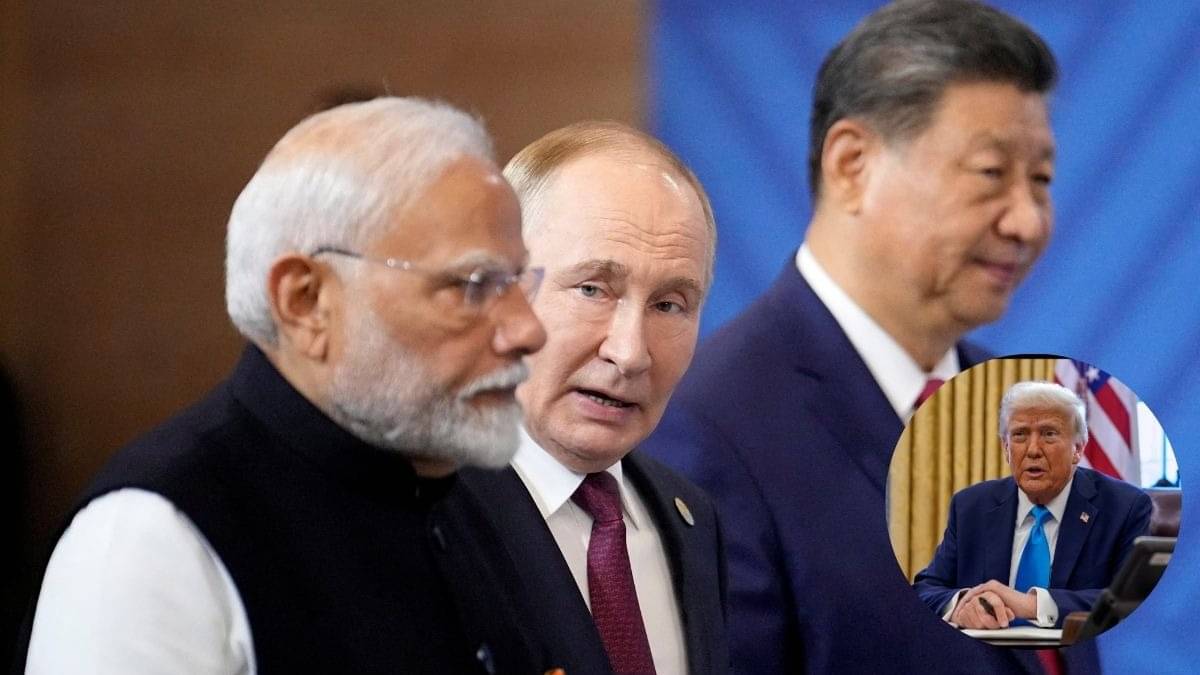PM Modi is entering one of his most delicate phases of foreign policy as he prepares to meet Chinese President Xi Jinping and Russian President Vladimir Putin at the SCO summit later this week. | Image:
Reuters
Prime Minister Narendra Modi is entering one of his most delicate phases of foreign policy as he prepares to meet Chinese President Xi Jinping and Russian President Vladimir Putin at the Shanghai Cooperation Organisation (SCO) summit later this week.
The timing is crucial because the United States has imposed a steep 50% tariff on Indian goods, escalating tensions between New Delhi and Washington.
The Tariff Shock
From August 27, the US has double tariffs on several Indian exports, targeting labour-heavy industries such as shrimp, apparel, leather, and gems & jewellery.
These sectors represent a large portion of India’s USD 86 billion annual exports to America. Pharmaceuticals, electronics, and petroleum products will be spared, but the higher duties will still cover more than half of India’s exports.
The move is widely seen as a penalty for India’s continued imports of Russian oil and weapons, despite US pressure. Currently, Indian goods face a 25% tariff; the new rate doubles the cost burden.
“While the tariffs add some downside tail risk, it is too early to consider actual forecast changes,” said Madhavi Arora, Chief Economist at Emkay Global. “The impending global trade reset is unlikely to be smooth, especially as China-US talks remain inconclusive.”
A Strategic SCO Gathering
Against this backdrop, Modi will travel to Tianjin, China, for the SCO summit on August 31–September 1. This will be his first visit to China in over seven years, a clear signal of India’s readiness to engage despite long-standing border tensions.
Xi Jinping will host over 20 world leaders at what will be the SCO’s largest summit since its inception in 2001. With 10 permanent members and 16 observer and dialogue partners, the bloc is increasingly being positioned by Beijing as a counterweight to US-led alliances.
Putin’s presence is equally significant. Isolated by the West since the Ukraine war, the Russian leader is relying on platforms like the SCO to reaffirm his role on the global stage. For PM Modi, sharing the stage with both Xi and Putin days after US tariffs hit sends a powerful message of India’s multipolar approach.
India’s Balancing Act
The SCO meet comes shortly after External Affairs Minister S. Jaishankar visited Moscow, where he met Putin and discussed trade, Ukraine, and Afghanistan. The visit highlighted India’s refusal to cut ties with Russia, despite criticism from the West.
At the same time, Modi will stop in Japan from August 28–30 for his annual summit with Prime Minister Shigeru Ishiba. The Japan visit underscores India’s intention to strengthen ties with like-minded Asian partners while continuing to engage with China and Russia.
What to Watch
At Tianjin, PM Modi is expected to emphasise India’s principles of sovereignty, connectivity, and cooperation. Observers will be watching to see whether the summit helps alleviate India-China tensions, especially along the disputed Himalayan border, and whether new areas of trade and visa cooperation emerge.
For New Delhi, the gathering is less about choosing sides and more about keeping options open in a shifting world order. As Arora noted, “Global trade realignment is underway, and India is trying to ensure it doesn’t get boxed into a single bloc.”
The image of Modi, Xi, and Putin together at this critical juncture will symbolise India’s balancing act, managing tariff shocks from Washington while deepening ties across Eurasia.

